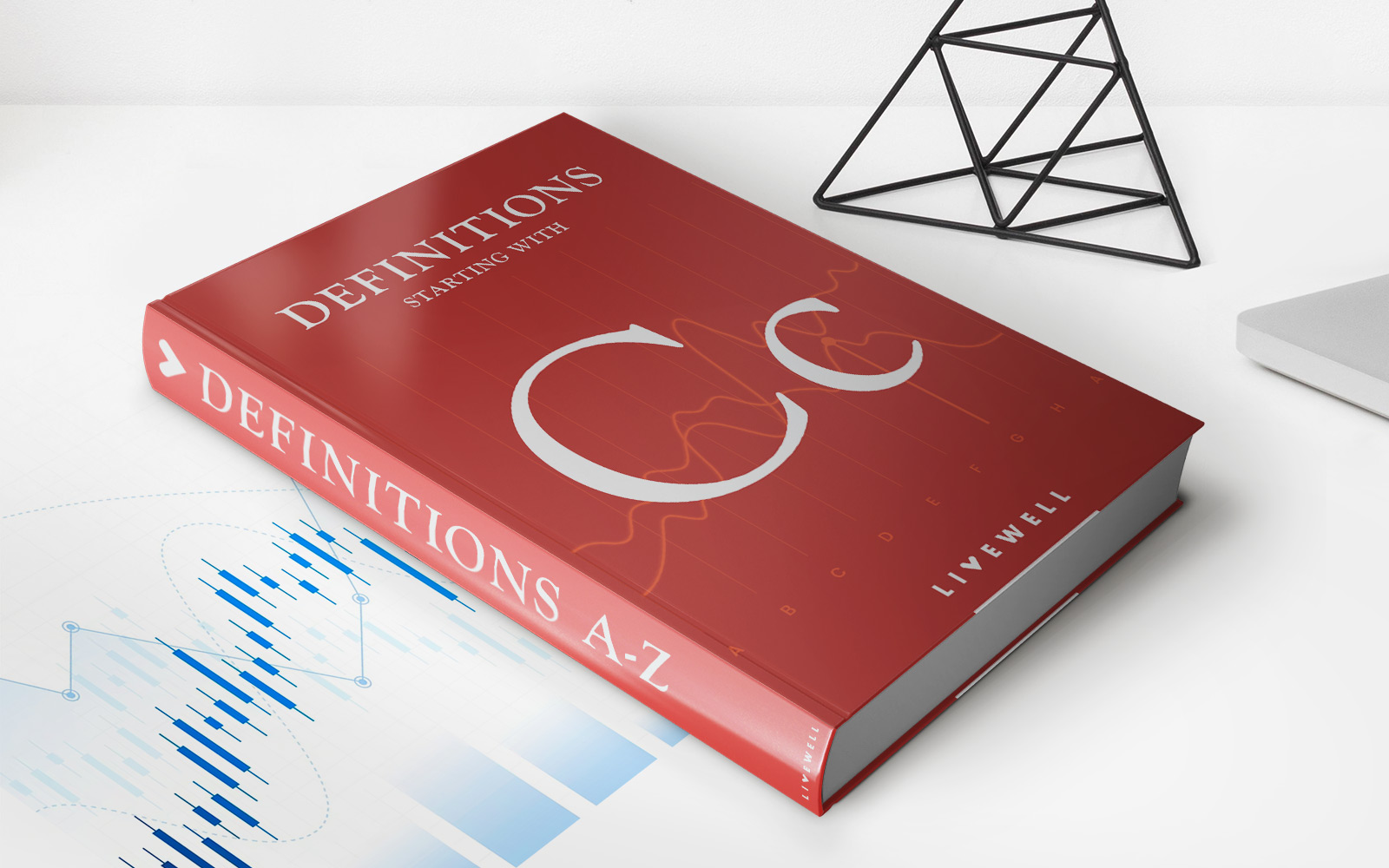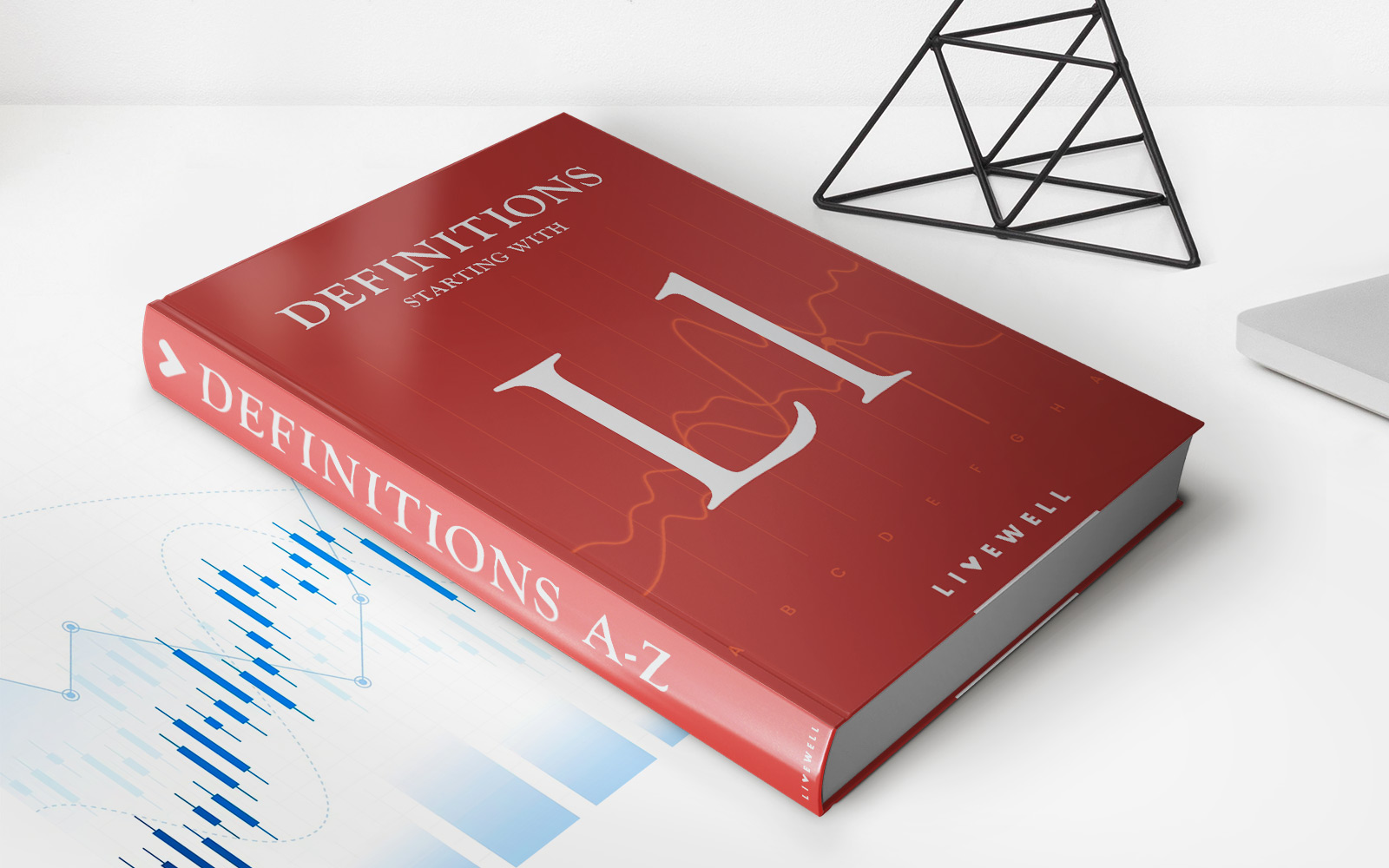

Finance
What Are Certificates Of Deposit
Modified: February 21, 2024
Discover how certificates of deposit can help you grow your finances. Explore the benefits, terms, and strategies to make the most of your investment.
(Many of the links in this article redirect to a specific reviewed product. Your purchase of these products through affiliate links helps to generate commission for LiveWell, at no extra cost. Learn more)
Table of Contents
- Introduction
- Definition of Certificates of Deposit
- Benefits of Certificates of Deposit
- Drawbacks of Certificates of Deposit
- Types of Certificates of Deposit
- How to Open a Certificate of Deposit
- Considerations Before Investing in Certificates of Deposit
- Strategies for Maximizing Returns on Certificates of Deposit
- Risks Associated with Certificates of Deposit
- Alternatives to Certificates of Deposit
- Conclusion
Introduction
Welcome to the world of finance, where opportunities for investment abound. As you navigate through the myriad of options, one investment instrument that you may come across is the Certificate of Deposit (CD). Whether you are a seasoned investor looking to diversify your portfolio or a novice seeking safe and reliable investment options, understanding what Certificates of Deposit are, their benefits and drawbacks, and how they work can help you make informed financial decisions.
A Certificate of Deposit is a financial product offered by banks and credit unions that allows individuals to earn interest on a fixed amount of money over a set period of time. It is a low-risk investment option, making it an attractive choice for conservative investors. CDs offer a guaranteed return on investment, making them a popular choice for those looking to protect their principal and earn a conservative return.
The benefits of Certificates of Deposit are multifaceted, including competitive interest rates, stability, and flexibility. Certificates of Deposit typically offer higher interest rates than regular savings accounts, providing investors with the opportunity to earn more on their money. Additionally, CDs are insured by the Federal Deposit Insurance Corporation (FDIC) up to $250,000 per depositor, offering a level of security against loss. Furthermore, investors have the flexibility to choose the term length that best suits their financial goals and liquidity needs.
However, while Certificates of Deposit offer a range of benefits, they also have some drawbacks. One of the primary disadvantages is the limited liquidity. When you invest in a CD, your money is tied up for a specific term, and accessing those funds before the maturity date may result in penalties. Another drawback is the opportunity cost. While CDs offer stability and security, their returns may not keep pace with inflation, meaning that the purchasing power of the invested money may decrease over time.
Before diving into the world of Certificates of Deposit, it’s important to understand the different types available. From traditional fixed-rate CDs to adjustable and bump-up options, there are various types of CDs that cater to different investor preferences. Each type has its own features, risks, and potential benefits, so understanding the specifics can help you choose the right option for your financial needs.
Now that you have a general understanding of what Certificates of Deposit are, their benefits and drawbacks, and the different types available, let’s delve deeper into how to open a CD, what to consider before investing, strategies for maximizing returns, risks associated with CDs, and alternative investment options. Armed with this knowledge, you’ll be better equipped to navigate the world of finance and make informed investment decisions.
Definition of Certificates of Deposit
Certificates of Deposit, commonly referred to as CDs, are financial instruments offered by banks and credit unions that allow individuals to deposit a fixed sum of money for a specified period of time, in exchange for a predetermined interest rate. CDs are considered a type of time deposit, as the funds are held for a fixed term, ranging from a few months to several years.
Unlike savings accounts or checking accounts, where funds can be easily accessed and withdrawn, CDs have restrictions on withdrawal. The deposited funds in a CD are locked in for the agreed-upon term, often referred to as the maturity period. During this time, the account holder cannot withdraw funds without incurring penalties. However, the upside of this restriction is that CDs generally offer higher interest rates than traditional savings accounts.
Interest on CDs is usually paid out in one of two ways: either at the end of the term, known as maturity, or on a regular basis, such as monthly, quarterly, or annually. The interest rate on CDs can be fixed or variable, depending on the type of CD. With a fixed-rate CD, the interest rate remains constant throughout the term, providing predictability and stability. On the other hand, variable-rate CDs have interest rates that may fluctuate during the term based on external factors, such as changes in market conditions.
Certificates of Deposit are considered low-risk investments due to their guaranteed returns and the fact that they are typically backed by the Federal Deposit Insurance Corporation (FDIC) for up to $250,000 per depositor, per insured bank. This insurance coverage provides a level of security to investors, protecting their principal investment in the event of bank failure.
CDs are often favored by conservative investors who prioritize capital preservation over higher potential returns. They are suitable for individuals who have a specific savings goal in mind, such as saving for a down payment on a house, funding a child’s education, or building an emergency fund. CDs can also be used as a part of a diversified investment portfolio, offering stability and a guaranteed return.
It’s important to note that while CDs offer stability, guaranteed returns, and the assurance of FDIC insurance, they may not generate the same level of returns as other investment options, such as stocks or mutual funds. Additionally, the interest earned on a CD is subject to taxation according to the individual’s tax bracket, which should be considered when evaluating the potential returns on investment.
In summary, certificates of deposit are time deposits offered by financial institutions, where individuals deposit a fixed amount of money for a specified period of time, in exchange for a predetermined interest rate. CDs are considered low-risk investments, providing stability and a guaranteed return. They are ideal for individuals who prioritize capital preservation and have specific savings goals in mind. Understanding the nuances of certificates of deposit can empower investors to make informed choices when considering this investment option.
Benefits of Certificates of Deposit
Certificates of Deposit (CDs) offer several benefits that make them an attractive investment option for individuals looking for stability and guaranteed returns. Let’s explore some of the key advantages of investing in CDs:
- Competitive Interest Rates: CDs typically offer higher interest rates compared to traditional savings accounts. This means that by investing in a CD, you can earn more on your money over the agreed-upon term. The longer the term of the CD, the higher the interest rate may be, allowing you to maximize returns on your investment.
- Stability: Unlike more volatile investment options such as stocks or mutual funds, CDs provide stability and security. The fixed interest rate ensures that your investment is not subject to market fluctuations. This stability can be particularly appealing to conservative investors who prioritize preserving their capital and are not comfortable with the potential risks associated with other investment vehicles.
- FDIC Insurance: Certificates of Deposit offered by banks are typically insured by the Federal Deposit Insurance Corporation (FDIC) up to $250,000 per depositor, per insured bank. This insurance coverage protects your investment in the event of bank failure, providing an extra layer of security and peace of mind. It’s important to ensure that the bank issuing the CD is FDIC-insured before investing.
- Flexibility: While CDs have a fixed term, typically ranging from a few months to several years, they offer flexibility in terms of choosing the term that suits your financial goals and liquidity needs. This means that you can select a CD with a shorter term if you anticipate needing access to the funds in the near future, or opt for a longer-term CD if you are looking for a stable investment for a longer period of time.
- Guaranteed Return on Investment: One of the most significant benefits of CDs is the guaranteed return on investment. When you invest in a CD, you know in advance exactly how much interest you will earn over the term. This predictability allows you to plan your finances accordingly and provides a level of certainty, especially in uncertain economic times.
These benefits make Certificates of Deposit an appealing option for individuals who are risk-averse or have specific financial goals in mind. They provide an opportunity to earn a competitive return on your investment, while offering stability and the assurance of FDIC insurance. However, it’s important to note that the trade-off for these benefits is limited liquidity and potentially lower returns compared to higher-risk investments.
Now that we’ve explored the benefits of Certificates of Deposit, let’s dive into some of the drawbacks associated with this investment option to gain a comprehensive understanding before making investment decisions.
Drawbacks of Certificates of Deposit
While Certificates of Deposit (CDs) offer a range of benefits, it’s important to consider the drawbacks associated with this investment option. Understanding the potential downsides can help you make informed decisions and ensure that CDs align with your financial goals. Let’s explore some of the key drawbacks:
- Limited Liquidity: One of the primary drawbacks of CDs is limited liquidity. When you invest in a CD, your money is locked in for the agreed-upon term, and accessing the funds before the maturity date may result in penalties or loss of interest. If you anticipate needing immediate access to your funds or want the flexibility to make regular withdrawals, CDs may not be the most suitable option for you.
- Opportunity Cost: While CDs offer stability and guaranteed returns, they may not provide the same level of potential returns as higher-risk investment options such as stocks or mutual funds. In times of economic growth and higher interest rates, the returns on CDs may not keep pace with inflation, meaning that the purchasing power of your invested money may decrease over time. It’s important to evaluate your investment goals and risk tolerance to determine if the potential return of a CD aligns with your expectations.
- Interest Rate Risk: CDs that offer fixed interest rates are subject to interest rate risk. This means that if market interest rates rise after you have invested in a CD, you may miss out on the opportunity to earn higher returns on your investment. Additionally, if you need to withdraw your funds before the maturity date due to unforeseen circumstances or changing market conditions, you may miss out on potential higher interest rates available in the market.
- Penalties for Early Withdrawals: As mentioned earlier, accessing your funds before the maturity date of a CD can result in penalties, which can eat into your returns or even result in a loss of principal. These penalties vary depending on the terms and conditions set by the bank, but they are designed to discourage early withdrawals. It’s essential to review and understand the penalties before investing in a CD to avoid any surprises or financial losses.
- Inflation Risk: CDs are considered conservative investments, which means they may not provide the same level of protection against inflation as more aggressive or high-yield investments. In periods of high inflation, the returns from CDs may not be sufficient to maintain the purchasing power of your money. To mitigate this risk, it may be prudent to consider a diversified investment portfolio that includes a mix of assets with different levels of risk and return potential.
Understanding the drawbacks of Certificates of Deposit allows you to make a well-informed decision about whether this investment option aligns with your financial goals and risk tolerance. While CDs offer stability and guaranteed returns, the trade-off is limited liquidity, potential opportunity cost, interest rate risk, penalties for early withdrawals, and inflation risk. By evaluating these factors, you can determine if CDs are the right fit for your investment strategy.
Next, let’s explore the different types of Certificates of Deposit to expand your understanding of the options available to you as an investor.
Types of Certificates of Deposit
When considering Certificates of Deposit (CDs), it’s important to be aware of the different types available. Each type of CD has its own features, risks, and potential benefits. Understanding these variations can help you choose the right CD that aligns with your financial goals and investment preferences. Let’s explore some of the most common types of CDs:
- Traditional Fixed-Rate CDs: This is the most common type of CD. With a traditional fixed-rate CD, you deposit a specific amount of money for a set term with a fixed interest rate. The interest rate remains constant throughout the entire term of the CD, providing stability and predictability. Traditional fixed-rate CDs are suitable for individuals who prefer a steady return and are not concerned about potential fluctuations in interest rates.
- Adjustable-Rate CDs: Adjustable-rate CDs, also known as variable-rate CDs, have interest rates that may change during the term of the CD. The rate is usually tied to a benchmark, such as the Treasury bill rate or the prime rate, which can fluctuate over time. Adjustable-rate CDs offer the potential for higher returns if interest rates rise, but also carry the risk of earning lower returns if interest rates decline.
- Jumbo CDs: Jumbo CDs are CDs that require a larger minimum deposit compared to traditional CDs. The minimum deposit amount for jumbo CDs is typically higher, often ranging from $100,000 to $1 million. In return for the larger deposit, jumbo CDs may offer higher interest rates. They are suitable for high-net-worth individuals or institutional investors who have a significant amount of cash to invest.
- Bump-Up CDs: Bump-up CDs give investors the option to take advantage of higher interest rates during the term of the CD. With a bump-up CD, you have the opportunity to request a one-time increase in your interest rate if the bank raises its rates. This can be particularly beneficial in a rising interest rate environment, as it allows you to earn a higher return without having to open a new CD.
- Callable CDs: Callable CDs are CDs that can be redeemed by the issuing bank before the maturity date. This means that, at the bank’s discretion, they can “call back” or terminate the CD before it reaches full term. Callable CDs often offer higher interest rates compared to traditional CDs in exchange for this call option. However, investors should be aware of the potential risk of having their CD called back, as it may disrupt their investment strategy.
These are just a few examples of the types of Certificates of Deposit available in the market. Different banks and financial institutions may offer additional variations or customized options. It’s important to carefully review the terms and conditions of each CD type, including the minimum deposit requirements, interest rate structures, penalties for early withdrawals, and any additional features or benefits.
By understanding the different types of CDs, you can choose the one that best suits your financial objectives, risk tolerance, and investment timeline. Remember to consider factors such as interest rate trends, your liquidity needs, and the potential impact of inflation when selecting a CD. Now that you have a better understanding of the types of Certificates of Deposit, let’s explore how to open a CD and the considerations to keep in mind before investing.
How to Open a Certificate of Deposit
Opening a Certificate of Deposit (CD) is a relatively straightforward process. Follow these steps to open a CD:
- Research and Compare: Start by researching different banks and credit unions that offer CDs. Compare their interest rates, terms, and any additional features or benefits they provide. Consider factors such as minimum deposit requirements, penalties for early withdrawals, and the reputation and stability of the institution.
- Choose the CD Type and Term: Determine the type of CD that aligns with your investment goals and risk tolerance. Consider the term length – whether you prefer a short-term CD, such as three months or six months, or a long-term CD, such as one year or five years. Choose a term that matches your financial objectives and liquidity needs.
- Gather Required Documents: Contact the chosen bank or credit union and inquire about the necessary documentation to open a CD account. Generally, you will need to provide proof of identification, such as a valid ID or passport, and your Social Security number or taxpayer identification number. Some financial institutions may also require you to have an existing account with them to open a CD.
- Deposit Funds: Once you have all the required documents, you will need to deposit the funds into the CD account. The minimum deposit amount varies depending on the bank and the type of CD. Make sure you have the funds available in a checking or savings account to transfer to the CD.
- Review Terms and Conditions: Carefully review the terms and conditions of the CD agreement. Pay attention to the interest rate, duration of the term, penalties for early withdrawals, and any additional fees or charges associated with the CD. Ensure that you fully understand the terms before proceeding with the investment.
- Complete the Application: Fill out the application provided by the bank or credit union. Include your personal information, deposit amount, term length, and any additional instructions or preferences. Review the application for accuracy and completeness before submitting it.
- Confirm Account Opening: After submitting the application and making the deposit, you will receive confirmation of your CD account opening. This may be in the form of an account statement or a confirmation email. Keep this documentation for your records.
- Monitor Your CD: Once your CD account is open, it’s important to regularly monitor its performance and keep track of the maturity date. Make note of any upcoming maturity dates to plan for the next steps, whether it’s renewing the CD, rolling it into another investment, or considering other options.
Opening a Certificate of Deposit can be an effective way to allocate your funds and earn a guaranteed return. By conducting thorough research, choosing the right CD type and term, and understanding the terms and conditions, you can make informed decisions and maximize the benefits of your CD investment.
Next, let’s explore some important considerations to keep in mind before investing in Certificates of Deposit.
Considerations Before Investing in Certificates of Deposit
Prior to investing in Certificates of Deposit (CDs), it’s important to carefully consider various factors to ensure they align with your financial goals and circumstances. Here are some key considerations to keep in mind:
- Financial Goals: Clarify your financial objectives and determine how a CD fits into your overall investment strategy. Are you saving for a short-term goal, such as a down payment on a house, or a long-term goal, such as retirement? Understanding your goals will help you choose the right CD term length and decide if CDs are the best investment vehicle for your needs.
- Risk Tolerance: CDs are considered low-risk investments, providing stability and guaranteed returns. However, they may not offer the same potential for higher returns as more aggressive investments. Evaluate your risk tolerance and assess whether the conservative nature of CDs aligns with your comfort level. If you are willing to take on more risk for the potential of higher returns, CDs may not be the most suitable option.
- Investment Time Horizon: Consider your time horizon for the invested funds. CD terms can range from a few months to several years. Choose a term length that matches your investment timeline. If you anticipate needing the funds in the near future, a short-term CD may be more appropriate. On the other hand, if you have a longer time horizon, a longer-term CD may offer more competitive interest rates.
- Liquidity Needs: Evaluate your need for liquidity and access to the invested funds. CDs generally have limited liquidity, and early withdrawals may result in penalties. If you anticipate needing immediate access to your funds, it may be wise to consider other investment options that offer more flexibility, such as a high-yield savings account or a money market account.
- Interest Rate Outlook: Monitor the interest rate environment and evaluate the potential impact on your CD investment. If interest rates are expected to rise, consider shorter-term CDs or CDs with a bump-up feature that allows you to take advantage of higher rates. Conversely, if interest rates are anticipated to decline, locking in a longer-term CD with a fixed rate may be beneficial.
- Fees and Penalties: Read and understand the terms and conditions of the CD, including any fees or penalties associated with early withdrawals or account maintenance. Some CDs may impose significant penalties for withdrawing funds before the maturity date. Ensure that you are comfortable with the terms and penalties before committing to a CD.
- FDIC Insurance: Confirm that the bank offering the CD is FDIC-insured. FDIC insurance provides protection for your deposit up to $250,000 per depositor, per insured bank. This insurance coverage offers peace of mind in the event of bank failure.
- Tax Considerations: CDs generate interest income, which is subject to federal and state income taxes. Consider the impact of taxes on your potential returns and consult with a tax advisor to understand the tax implications of your CD investment.
Considering these factors will help you make informed decisions when investing in Certificates of Deposit. Carefully evaluate your financial goals, risk tolerance, liquidity needs, and the prevailing interest rate environment. By doing so, you can determine if CDs are the right investment vehicle to meet your objectives.
Next, let’s explore some strategies for maximizing returns on Certificates of Deposit.
Strategies for Maximizing Returns on Certificates of Deposit
While Certificates of Deposit (CDs) are known for their stability and guaranteed returns, there are strategies you can employ to maximize your earnings within the constraints of this investment option. Here are some strategies to consider:
- Shop Around for Competitive Rates: Different financial institutions offer varying interest rates on CDs. Take the time to research and compare rates from different banks and credit unions. Look for the highest rates available for your desired CD term length. Even a small difference in interest rates can significantly impact your overall returns.
- Consider CD Laddering: CD laddering is a strategy that involves dividing your investment into multiple CDs with different maturity dates. By staggering the terms, you can take advantage of higher interest rates as CDs mature while maintaining liquidity. As each CD matures, you can reinvest your funds in a new CD with a potentially higher interest rate.
- Take Advantage of Bump-Up CDs: If you anticipate rising interest rates, consider investing in bump-up CDs. These CDs offer the flexibility to request a one-time increase in the interest rate if rates go up during the term. This allows you to earn a higher rate without opening a new CD.
- Opt for Longer-Term CDs: Generally, the longer the term of a CD, the higher the interest rate offered. If you have a longer investment horizon and don’t need immediate access to your funds, consider investing in longer-term CDs to maximize your returns. However, be mindful of potential interest rate changes during the term.
- Reinvest Interest Earnings: Rather than withdrawing the interest earned on your CD, consider reinvesting it back into the CD. This allows you to compound your earnings and generate additional returns over time. Talk to your bank or credit union to confirm if reinvesting interest is an option.
- Roll Over or Renew CDs: When your CD matures, review the current interest rates and compare them with other available options. If the rates are favorable, consider rolling over or renewing the CD for another term. This ensures that your money continues to earn competitive returns without the need for additional paperwork or account setup.
- Monitor CD Terms and Penalties: Stay aware of your CD’s maturity date and any penalties associated with early withdrawals. Plan ahead and be prepared to make decisions when your CD reaches maturity. Avoid any unnecessary penalties by understanding the terms and ensuring that you withdraw or reinvest the funds in a timely manner.
- Diversify Your Investment Portfolio: While CDs provide stability, they may not offer the highest potential returns. Consider diversifying your investment portfolio with a mix of asset classes, such as stocks, bonds, or real estate, to potentially achieve higher overall returns. Don’t solely rely on CDs as the sole vehicle for investment growth.
Combining these strategies can help you maximize the returns on your Certificates of Deposit. By seeking competitive rates, strategically laddering your CDs, and reinvesting earnings, you can make the most of this low-risk investment option. It’s important to review your financial goals and risk tolerance to determine which strategies align with your investment objectives.
Now, let’s explore the potential risks associated with Certificates of Deposit that you should be aware of.
Risks Associated with Certificates of Deposit
While Certificates of Deposit (CDs) are generally considered low-risk investments, as with any investment, there are risks that investors should be aware of. Understanding these risks can help you make informed decisions and mitigate potential losses. Here are some of the risks associated with CDs:
- Interest Rate Risk: CDs with fixed interest rates are subject to interest rate risk. If interest rates rise after you have invested in a CD, you may miss out on the opportunity to earn higher returns on your investment. Conversely, if interest rates decline, locking into a CD with a fixed rate may limit your ability to take advantage of potentially higher rates in the future.
- Limited Liquidity: When you invest in a CD, your money is locked in for a specific term. Accessing the funds before the maturity date may result in penalties or loss of interest. If you anticipate needing immediate access to your funds, CDs may not be the most suitable option, as they lack the liquidity of other investments such as savings or money market accounts.
- Inflation Risk: CDs, especially those with longer terms, may not provide significant protection against inflation. Inflation erodes the purchasing power of money over time. If the interest earned on a CD does not outpace inflation, the real value of your investment may decrease. It’s important to consider inflation rates and potential returns when evaluating the long-term impact of a CD.
- Default Risk: While Certificates of Deposit issued by banks and credit unions are typically backed by the Federal Deposit Insurance Corporation (FDIC), there is still a small degree of default risk. In rare cases, if a bank becomes insolvent or goes out of business, there is a possibility of losing a portion or all of your investment. It’s crucial to ensure that the issuing bank is FDIC-insured and monitor the financial stability of the institution.
- Opportunity Cost: By choosing to invest in CDs, you may forgo the potential for higher returns offered by riskier investment options, such as stocks or mutual funds. While CDs provide stability, they may not generate significant returns compared to more aggressive investments. Consider your investment goals and risk tolerance to determine if the potential returns of a CD align with your expectations.
It’s important to assess your risk tolerance and financial goals before investing in Certificates of Deposit. While the risks associated with CDs are generally lower compared to other investment options, they still carry inherent risks. By diversifying your investment portfolio, staying informed about interest rate trends, and regularly reviewing the terms of your CDs, you can manage these risks to some extent.
Now, let’s explore some alternative investment options to consider if Certificates of Deposit don’t align with your risk tolerance or investment objectives.
Alternatives to Certificates of Deposit
While Certificates of Deposit (CDs) offer stability and guaranteed returns, they may not be the ideal investment option for everyone. If you are seeking alternatives to CDs that can potentially provide higher returns or more flexibility, consider the following options:
- High-Yield Savings Accounts: High-yield savings accounts offer competitive interest rates that can be higher than traditional savings accounts. These accounts provide easy access to funds while still earning a respectable return. They are a good option if you prioritize liquidity and want to earn interest without locking your funds into a fixed term like a CD.
- Money Market Accounts: Money market accounts are similar to savings accounts, but they typically offer higher interest rates and, in some cases, check-writing privileges. These accounts may require a higher minimum balance, but they provide the advantage of liquidity and the opportunity to earn a slightly higher return on your funds.
- Treasury Securities: Treasury securities, such as Treasury bills, Treasury notes, and Treasury bonds, are backed by the U.S. government. They are considered low-risk investments and offer a variety of terms. Treasury securities can be purchased directly through the U.S. Department of the Treasury or through a broker. They provide competitive interest rates and are a viable alternative to CDs for conservative investors.
- Bond Funds: Bond funds are investment vehicles that pool money from multiple investors to invest in a diversified portfolio of bonds. Bond funds offer the potential for higher returns compared to CDs, as they invest in a variety of fixed-income securities. However, it’s important to evaluate the risks associated with bond funds, as their value can fluctuate based on interest rate changes and the credit quality of the underlying bonds.
- Stocks: Stocks represent ownership in a company and offer the potential for higher returns compared to CDs and other fixed-income investments. Investing in individual stocks carries higher risk due to market volatility, but diversified stock portfolios or index funds can provide long-term growth potential. Stocks are more suitable for investors with a higher risk tolerance and a longer investment horizon.
- Mutual Funds: Mutual funds pool money from multiple investors to invest in a diversified portfolio of stocks, bonds, or other securities. They offer the advantage of professional management and access to a broader range of investment opportunities. Mutual funds can provide a higher potential for returns compared to CDs, but they also carry market risk and may have fees and expenses associated with them.
- Real Estate Investment Trusts (REITs): REITs are companies that own, operate, or finance income-generating real estate properties. Investing in REITs allows you to participate in the real estate market without directly owning properties. REITs can provide attractive dividends and potential for capital appreciation, but they carry market and real estate-specific risks.
- Peer-to-Peer Lending: Peer-to-peer lending platforms connect borrowers directly with individual lenders, cutting out traditional financial institutions. Investors can earn interest by lending money to individuals or small businesses. Peer-to-peer lending carries higher risk due to the potential for default by borrowers, so conducting thorough research and diversifying loan investments is crucial.
These alternatives to Certificates of Deposit provide a range of options for investors seeking different levels of risk, potential returns, and liquidity. It’s important to carefully consider your financial goals, risk tolerance, and investment horizon when exploring these alternatives. Evaluating the pros and cons of each option and diversifying your portfolio can help you achieve a well-rounded investment strategy.
Now that you have explored the alternatives to CDs, let’s conclude with a summary of the key points discussed.
Conclusion
Certificates of Deposit (CDs) offer investors a secure and predictable way to grow their savings. With competitive interest rates, stability, and the assurance of FDIC insurance, CDs have become a popular choice for individuals looking to preserve capital and earn a guaranteed return. However, it is important to weigh the benefits and drawbacks of CDs before investing.
In this article, we examined the definition of Certificates of Deposit and explored their benefits. CDs offer competitive interest rates, stability, flexibility, and FDIC insurance, making them an attractive option for conservative investors. We also discussed the drawbacks of CDs, such as limited liquidity and potential opportunity cost.
We delved into different types of Certificates of Deposit, including traditional fixed-rate CDs, adjustable-rate CDs, jumbo CDs, bump-up CDs, and callable CDs. Understanding these options helps investors choose the right CD type that aligns with their investment goals and preferences.
Additionally, we provided a step-by-step guide on how to open a CD, emphasizing the importance of research, gathering required documents, and reviewing terms and conditions. We discussed considerations before investing in CDs, such as financial goals, risk tolerance, interest rate outlook, and fees and penalties.
To maximize returns on Certificates of Deposit, we highlighted strategies such as shopping around for competitive rates, utilizing CD laddering, reinvesting interest earnings, and rolling over or renewing CDs. These strategies can help maximize the potential of your CD investment.
We also examined the risks associated with CDs, including interest rate risk, limited liquidity, inflation risk, default risk, and opportunity cost. Understanding these risks allows investors to make informed decisions and manage potential losses.
Finally, we explored alternative investment options, including high-yield savings accounts, money market accounts, Treasury securities, bond funds, stocks, mutual funds, REITs, and peer-to-peer lending. These alternatives offer different levels of risk, potential returns, and liquidity, allowing investors to diversify their portfolios and align their investments with their specific goals and preferences.
In conclusion, Certificates of Deposit can be a valuable addition to an investment strategy, providing stability and guaranteed returns. However, it is essential to consider your financial goals, risk tolerance, and investment horizon when deciding whether CDs are the right choice for you. By understanding the nuances of Certificates of Deposit, considering alternatives, and implementing effective strategies, you can make the most of your investment journey and achieve your financial objectives.














